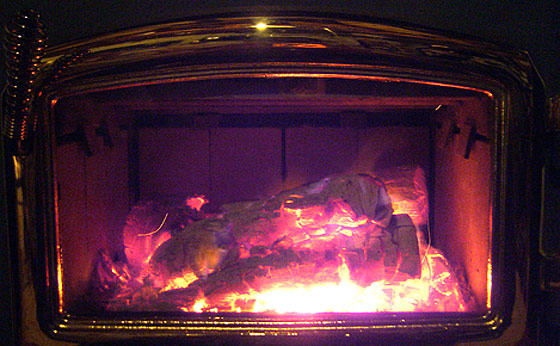Why You Should Only Burn Seasoned Firewood
With winter approaching and cooler weather upon us, people are beginning to load their their wood stoves with firewood. Hopefully they have purchased (or procured themselves) wood from early this year or last year, so that it has had a chance to dry out (‘season’). Burning wet wood or only partially seasoned wood in your wood stove is not a very good idea, and here’s why…
Wet wood provides MUCH LESS heat, and causes MUCH MORE creosote to form in the chimney.
Here’s why:
Today’s airtight wood stoves extract heat from wood in two ways.
1. The primary source of heat from a wood stove is the combustion of the wood itself.
2. The secondary source of heat is from the combustion of the gasified resins and unburned wood particles from the primary fire.
Unless your wood stove is a very primitive model, you’ll find a baffle plate of some kind near the top of your stove, between the fire chamber and the flue outlet. This is where the secondary burn occurs, and where your stove creates up to half the heat it delivers to you. The amount of secondary combustion that occurs varies widely from model to model, mainly due to advances in heat extraction technology over the years…
A twelve-year-old baffled airtight can be presumed to operate at about 45% efficiency, while many of today’s EPA approved wood stoves exceed 70% efficiency. The big difference between the older wood stoves and today’s wood stoves can be found in the baffle area, where newer, more sophisticated techniques have been incorporated to re-burn the exhaust gases.
When you add an unseasoned or wet piece of wood to your fire, the water contained in the wood heats up and turns to steam, which mixes with the exhaust gases and extinguishes the secondary burn. Regardless of how sophisticated your baffle system is, this cuts your heat output by up to 50%, and results in cool, water-laden exhaust filled with unburned particles and exhaust gases. This wet, heavy, high-density smoke travels very slowly up the chimney, where it cools even further, condensing onto the walls of the flue and causing excessive creosote formation. So, when you burn unseasoned or wet wood, you dramatically DECREASE your heat output, while dramatically INCREASING the likelihood of chimney fires.
Another drawback to burning wet or unseasoned wood is creosote formation on the viewing window. No matter how good the airwash design that keeps the window clean, it won’t work when the firebox is full of wet smoke. A blackened viewing window is one of the most reliable indicators that the wood is improperly seasoned.
The bottom line: Think ahead, and allow enough time for your wood to season before use in your wood stove.
Some data sourced from chimneysweeponline.com (no affiliation with us)

